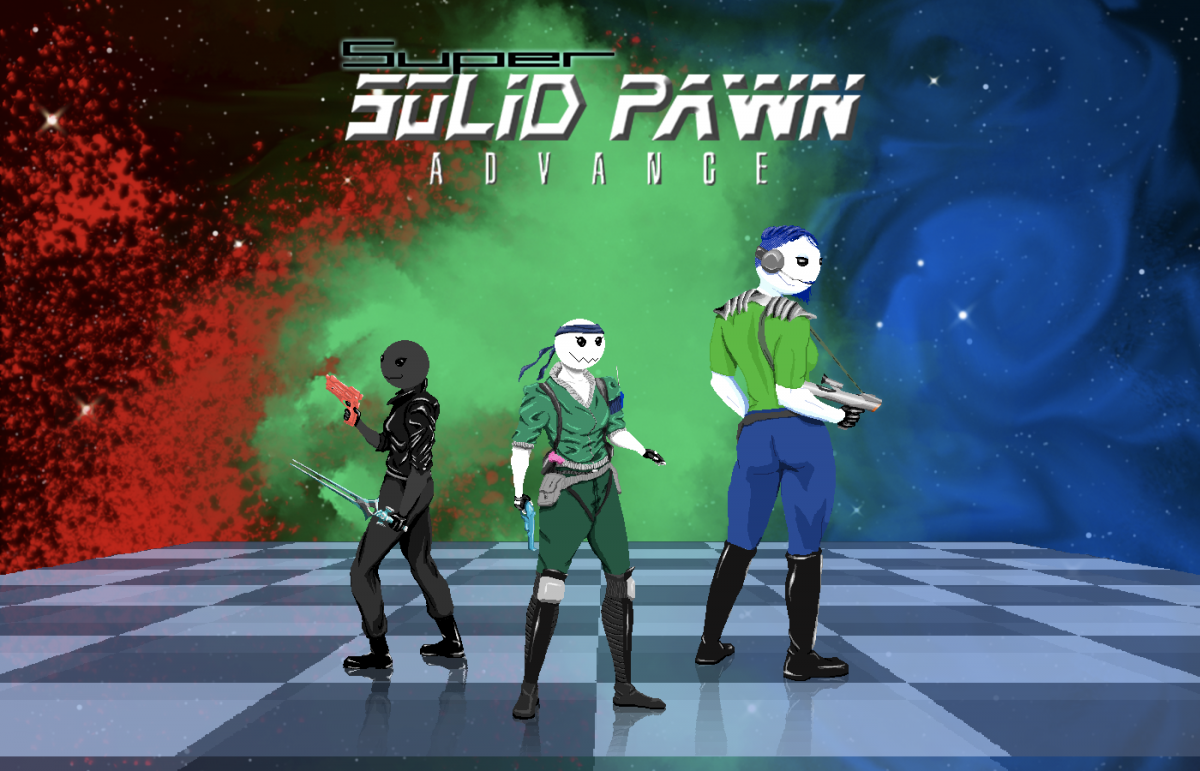At the turn of the century, the French based gaming company Ubisoft revitalized the Prince of Persia franchise with The Sands of Time. This action puzzle platformer is, to my mind, a shining example of bringing a 2D game to life in 3D. It changed a lot of the conventions from the previous games. The emphasis was put on more intricate parkour based platforming and there was no countdown timer. However it maintained the brutal sudden death gameplay, but balanced it out with the inclusion of the ability to turn back small amounts of time to undo your mistakes. That addition was so simple, but so perfect for this series that is helped make the game a classic.
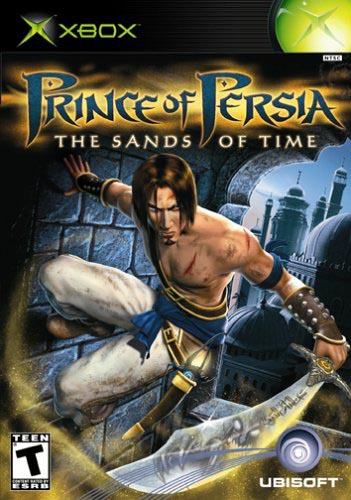
The Sands of Time would go on to form a trilogy of fantastic games, and for most gamers, this was what the first 3D Prince of Persia game would be, but that is not really the case. Prince of Persia did not escape that awkward period of early 3D gaming. In the late 90s, the company that owned Prince of Persia, Brøderbund, was bought out by Mattel. This decision that had serious business consequences for the toy manufacturer, and within a very short time, Brøderbund’s IPs were sold to various companies, mainly Ubisoft. But in the brief time Mattel owned it, they made use of the Prince of Persia franchise and released Prince of Persia 3D.
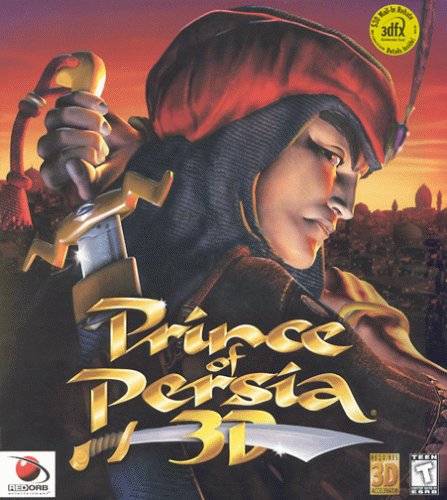
The game received a lukewarm response, and it was heavily criticized for a series of technical bugs. The company Red Orb, a subsidiary group from Brøderbund, helmed the project and later went about creating a console port for the Sega Dreamcast. Although they managed to fix some issues, the port was rushed out before it could be fully patched. It was released as Arabian Nights: Prince of Persia.
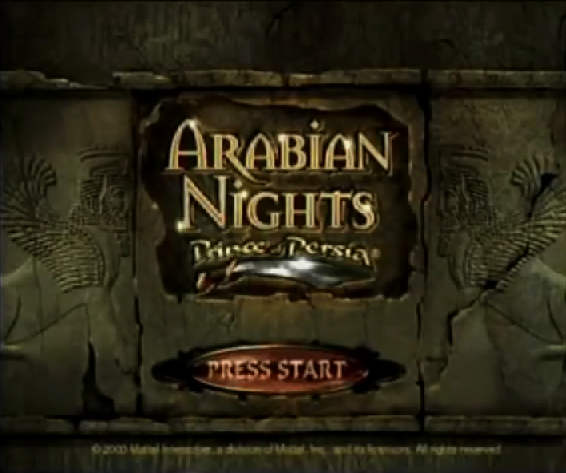
-gameplay screenshots are from the PC version-
Story:
Some time after the final defeat of the evil vizier Jaffar, the Sultan is invited to the kingdom of his brother Assan. During a banquet, Assan turns his guards against the Sultan’s envoy, killing the guards and throwing the Prince into the dungeon while trapping the Princess and Sultan in the palace. It turns out that the Sultan and Assan had arranged for the Princess to marry Assan’s son Rugnor. Assan is furious that the arrangement was broken off when the Prince was allowed to marry the Princess and wants revenge. Now the Prince must make his way through the palace and capital city to save the Princess and Sultan and escape Assan’s kingdom.
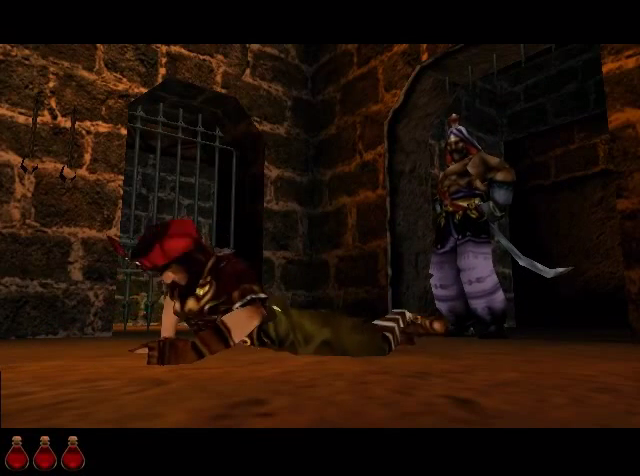
It is unclear whether or not the events of Prince of Persia 2 are canon in this game. In the Shadow and the Flame development bible written by Jordan Mechner, the second game’s open ended conclusion was supposed to lead into a third game shortly after. Unfortunately, PoP 2 didn’t sell very well and Brøderbund cancelled the proposed third game. The manual to PoP 3D contains a plot synopsis as well as a brief retelling of the Prince’s adventures from both games. However the Arabian Nights manual only brings up of the first game, and still describes him as a mysterious stranger without any mention of the second game’s events. As a fan of that game, I’m disappointed, but like the previous games, the story is second to the game, although this one goes to some pretty wacky places.
Gameplay:
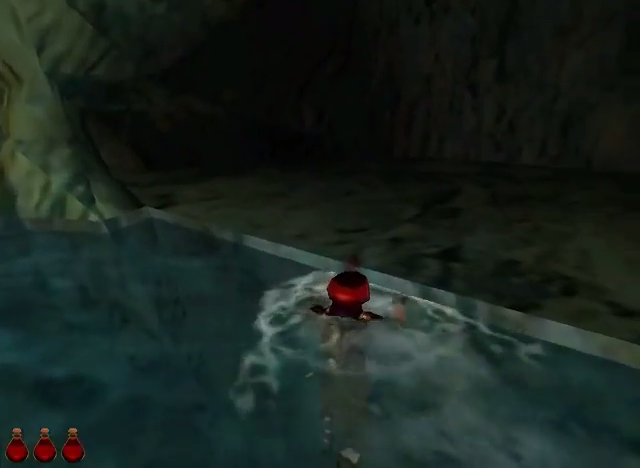
Prince of Persia 3D is a puzzle platformer. Being an early 3D game, the Prince’s movements are very tank like. In fact, the controls are almost an exact copy of the control scheme of the first Tomb Raider games. The way you run, the use of a walk button to sidestep and avoid traps and cliffs, and the jumping mechanics are all ripped from Lara Croft’s move set. It is interesting that the controls are actually a rather logical next step from the controls of the 2D games. Yet despite the similarities, the controls in PoP 3D are more slippery than its contemporaries. The Prince moves very quickly and his running jumps go very far in an instant. Compare this to the precise build up of Lara Croft’s running and jumping. Her movements are slow, but she gains momentum in a realistic fashion. This allows you to be cautious and careful when approaching an obstacle or trap. In PoP 3D, the Prince’s speed is a hindrance that makes precise jumping difficult, which results in a lot of instant death.
In the PC version, the Prince will occasionally say something aloud that helps explain a puzzle. This is not the case on the Dreamcast, which can make some of the puzzle solving more obtuse.
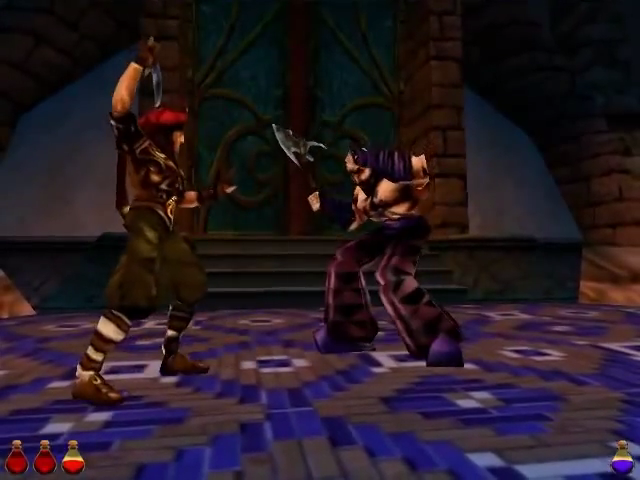
Combat is very much like the old PoP games. When an enemy approaches, you draw your weapon and the controls change to combat mode. In this mode you are always facing your opponent. You can back away, or inch forward. Even in this 3D game you cannot strafe around the enemy for a better shot. Killing enemies is a matter of trading blows and blocking attacks. Most enemies have a sort of pattern to match, and if you get things just right you can take them down without breaking a sweat. Even so, there are times when the hit detention bugs out and you can spend your time flailing at the enemy and never getting a hit in.
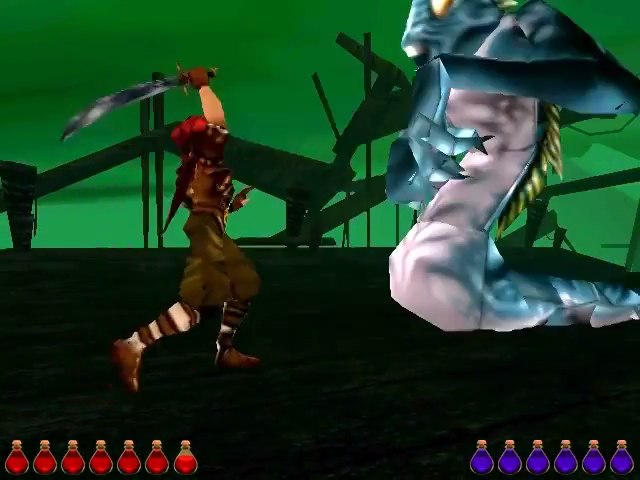
One of the game’s new features is the ability to gather an arsenal of weapons from a basic sword to a battle-axe and a bow and arrow. The bow and arrows are also used to solve puzzles. The new weapons actually do offer some variety. Some have different lengths, some have special features, and one can instantly kill any enemy, bosses included, but can only be used a few times before being lost forever.
A feature exclusive to the Dreamcast version is the inventory, which brings forth one of the best features of Arabian Nights, potion collecting. In the 2D games, you could wind up with full health and come across a healing potion that simply couldn’t be used, and later find yourself in desperate need of one. Now you do not instantly use potions, rather you pick them up and put them into your inventory for later use at any point. You can only carry four, but it can make all the difference.
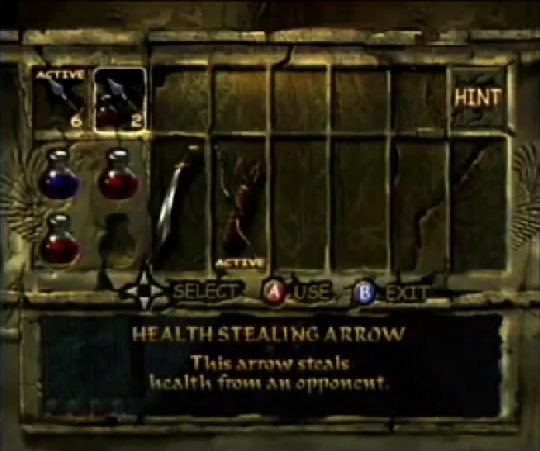
Upgrading your health has not changed much from previous games. If you are a dedicated explorer, then you will occasionally find special potions that increase your health bar. These are magic runes in the console version. There are other potions and runes that offer different powers, such as brief invisibility and a super jump. However, one rune is unique to the Dreamcast version, the save rune. Again like Tomb Raider, the PC version of the game allows you to save at any time, but the console version only lets you save at specific save runes places at certain points in the levels. This can be a giant pain. You can make it very far in a hard puzzle, only to die near the end and have to do it all over again. In a sense, this is exactly like the old games, but in the worst way.
Presentation:
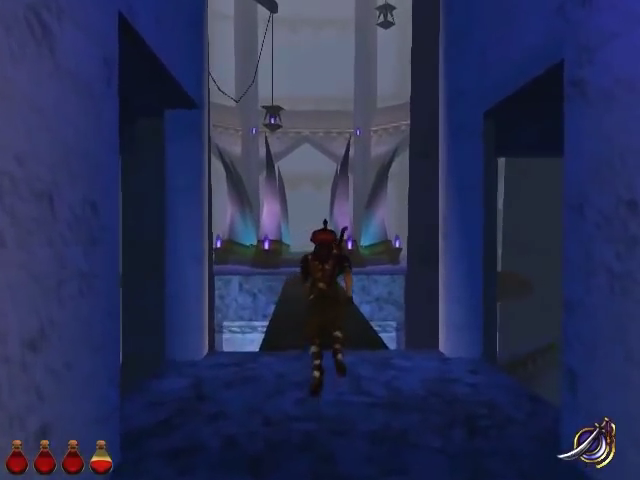
For the time it was released, Prince of Persia 3D has decent graphics. Between the PC and Dreamcast, they look almost identical, though the PC version has a wider aspect ratio, the colors are more vivid, and the levels have more impressive skyboxes. The game is compatible with the Dreamcast VGA box, giving the console port finer detail. The Prince has a pretty good character model, but most of the other characters and enemies are rather undetailed. The levels have a rather nice variety, even if they are all somewhat dingy and dark. They range from the dungeons, to a city slum, a frozen mountain peak, and even an airship. The game has a very natural sense of progression as you move from location to location, and the levels are pretty long, something that only makes the scarce save runes more noticeable on the Dreamcast.
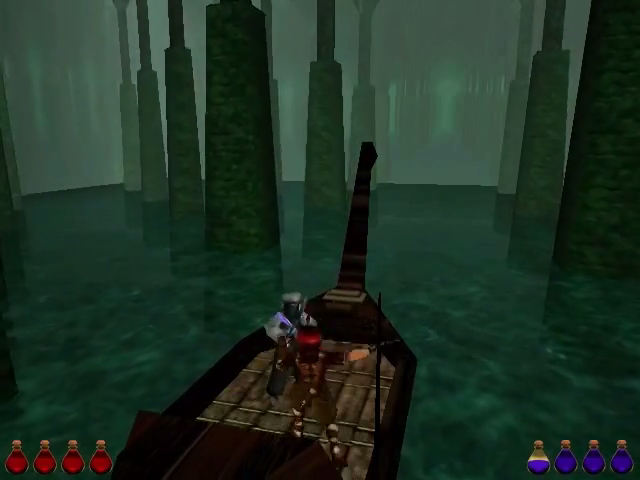
The story has more of a presence in this entry, much like in PoP 2, and at the end of certain levels you will get a scene furthering the plot. Each one is fully voice acted, and the cast does a pretty good job. The opening cutscene used rather well detailed 3D animation for all of the character, however every other cutscene, although pre-rendered, use the blocky and jagged in game graphics. It’s a bit of a shame, but not too great a loss.
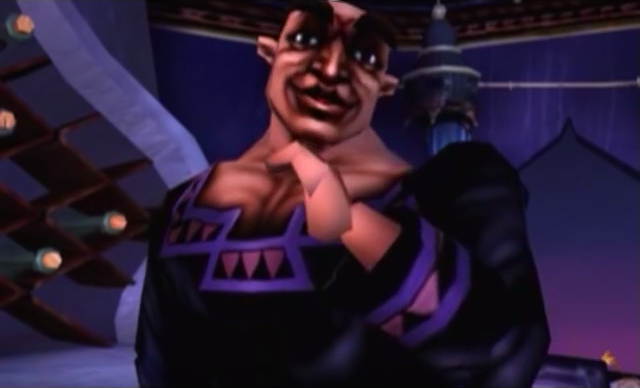
Tom Rettig composed the music. It is not an extensive score, but it is actually rather well done. Each level has it’s own ambient music and the fights have different music depending on the type of enemy. The fights songs play for every conflict in the PC version, while they only appear during boss fights on the Dreamcast. Everything has a Middle Eastern flavor to it that goes very nicely with the setting, and it does not distract from the gameplay.
Conclusion:
Prince of Persia 3D was another example of 3D growing pains. It’s a relic from a time when people were throwing anything and everything at the wall and seeing what stuck. In the end, PoP 3D is a Tomb Raider clone that doesn’t quite have the polish of the franchise it is aping. Gameplay is slippery, hit detection is slipshod, and the lack of an ever present save feature in the console port wears your patience thin.
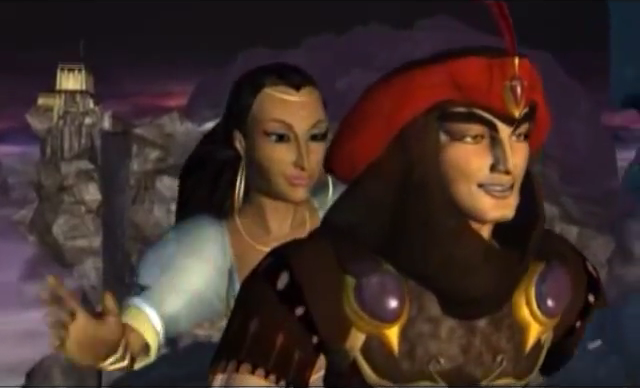
The game’s conclusion is somewhat open ended once again, and if Mattel had managed to hang onto the rights, who knows what would have become of this series. It was not the best game that could have been made, and its shortcomings are many, but it is still an interesting paint in gaming history. Another of those transitional titles that paved the way for finer, more expertly crafted 3D gaming.
